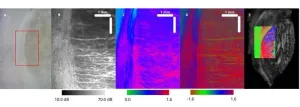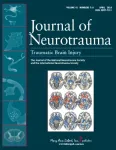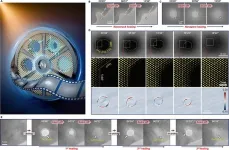(Press-News.org)
Older adults who are more vulnerable to financial scams may have brain changes linked to a higher risk of Alzheimer’s disease, according to a first-of-its-kind study led by researchers at the USC Dornsife College of Letters, Arts and Sciences.
Nearly 7 million Americans are living with Alzheimer’s disease, the fifth leading cause of death among those 65 and older. The disease will carry an estimated $360 billion in health care costs this year alone, according to the Alzheimer’s Association.
Researchers led by Duke Han, professor of psychology and family medicine at USC Dornsife, aimed to better understand the link between early Alzheimer’s disease and financial vulnerability by using high-powered MRI to examine the brains of 97 study participants over age 50.
The scientists focused on the entorhinal cortex, a region that acts as a relay station between the hippocampus — the brain’s learning and memory center — and the medial prefrontal cortex, which regulates emotion, motivation and other cognitive functions. It is often the first region to show changes in Alzheimer’s disease, typically becoming thinner as the disease progresses.
None of the study participants, age 52 to 83, showed clinical signs of cognitive impairment, but all underwent MRI scans to measure the thickness of their entorhinal cortex.
In addition, the researchers used a standardized tool called a Perceived Financial Exploitation Vulnerability Scale (PFVS) to assess the participants’ financial awareness and their susceptibility to poor financial decisions, which they term “financial exploitation vulnerability,” or FEV.
By comparing the adults’ FEV with the thickness of their entorhinal cortex, Han and the team found a significant correlation: Those more vulnerable to financial scams had a thinner entorhinal cortex.
This was especially true for participants age 70 and older. Previous research has linked FEV to mild cognitive impairment, dementia and certain molecular brain changes associated with Alzheimer’s disease.
Han, who holds a joint appointment at Keck School of Medicine of USC, says the findings provide crucial evidence supporting the idea that FEV could be a new clinical tool for detecting cognitive changes in older adults — changes that are often difficult to detect.
“Assessing financial vulnerability in older adults could help identify those who are in the early stages of mild cognitive impairment or dementia, including Alzheimer’s disease,” Han said. He added, however, that financial vulnerability alone is not a definitive indicator of Alzheimer’s disease or other cognitive decline. “But assessing FEV could become part of a broader risk profile,” he said.
Han also noted several limitations of the study. Most participants were older, white, highly educated women, making it difficult to generalize the findings to a more diverse population. Additionally, while the study found a link between entorhinal cortex thickness and FEV, it does not prove one. Finally, the study does not include specific measures of Alzheimer’s disease pathology.
These limitations leave open the possibility that the relationship between FEV and entorhinal cortex thinning could be explained by other factors. Accordingly, Han said that more research, including long-term studies with diverse populations, is needed before FEV can be considered a reliable cognitive assessment tool.
About the study
In addition to Han, study authors include Laura Fenton, Aaron Lim, Jenna Axelrod and Daisy Noriega-Makarskyy of USC Dornsife; Lauren Salminen, Hussein Yassine and Laura Mosqueda of Keck School of Medicine of USC; Gali Weissberger of Israel’s Bar-Ilan University; and Annie Nguyen of the University of California, San Diego.
END
In a new study, researchers compared the orientations of nerve fibers in a human brainstem using two advanced imaging techniques: diffusion magnetic resonance imaging (dMRI)-based tractography and polarization sensitive optical coherence tomography (PS-OCT). The findings could aid in combining these techniques, which each offer unique advantages, to advance our understanding of the brain’s microstructure and help inform new techniques for early diagnosis of various brain disorders.
Isabella Aguilera-Cuenca from ...
With recent advances in neuroimaging, moving from qualitative to quantitative outputs, an understanding is needed of what normal data look like to be able to apply these advances to diagnosis and outcomes prediction in traumatic brain injury (TBI). A new article in the peer-reviewed Journal of Neurotrauma introduces the large Normative Neuroimaging Library (NLL) to the research community. Click here to read the article now.
The American College of Radiology and Cohen Veterans Bioscience created a reference ...
WASHINGTON, D.C. - The use of Artificial Intelligence (AI) in scientific research is a top priority at the Department of Energy (DOE), which today announced $68 million in funding for 11 multi-institution projects, comprising 43 awards.
The funded projects will develop new ways to create foundation models, which are machine learning or deep learning models that can be used across a wide range of applications because they’re trained on broad data. Foundation models are a key building block of AI.
Those models will be used in computational science, to automate workflow in laboratories, to accelerate scientific programming, and much more. The possibilities ...
The Department of Energy’s (DOE) Office of Science today announced a new research and development opportunity led by Oak Ridge National Laboratory (ORNL) to advance technologies and drive new capabilities for future supercomputers. This industry research program worth $23 million, called New Frontiers, will initiate partnerships with multiple companies to accelerate the R&D of critical technologies with renewed emphasis on energy efficiency for the next generation of post-exascale computing in the 2029 and beyond time frame.
“There is a growing consensus that urgent action is needed to address an array of bottlenecks ...
A team led by scientists at the Department of Energy’s Oak Ridge National Laboratory identified and successfully demonstrated a new method to process a plant-based material called nanocellulose that reduced energy needs by a whopping 21%. The approach was discovered using molecular simulations run on the lab’s supercomputers, followed by pilot testing and analysis.
The method, leveraging a solvent of sodium hydroxide and urea in water, can significantly lower the production cost of nanocellulosic fiber — a strong, lightweight biomaterial ideal as a ...
Older women struggling with urinary incontinence can benefit from regular, low-impact exercise, with yoga as well as stretching and strengthening showing benefits in a new study published Aug. 27 in Annals of Internal Medicine.
The research, led by scientists at Stanford Medicine and the University of California, San Francisco, is part of a larger effort to identify low-risk, low-cost ways to treat one of the most common health problems women face as they age.
After 12 weeks of a low-impact yoga program, study participants had about 65% fewer episodes of incontinence. Women in a control group doing stretching and strengthening exercises ...
In a comprehensive review of recent genetic and population studies, published in the peer-reviewed medical journal Genomic Psychiatry (Genomic Press, New York), Professors Michael Owen and Michael O'Donovan of Cardiff University's Centre for Neuropsychiatric Genetics and Genomics present evidence that challenges conventional wisdom about cognitive deficits in schizophrenia. Their analysis reveals that premorbid cognitive impairment – lower IQ and other cognitive deficits present before the onset of psychosis – is largely explained by non-familial factors rather than by the same inherited genetic variants that ...
As the world transitions to cleaner energy sources, the need for energy-relevant metals and critical minerals has surged dramatically. Driven by the rise of electric vehicles and other green technologies, these essential materials are in high demand across the globe.
Metals, such as lithium, cannot be grown. They must be mined or recycled, making this a top priority for researchers in the mining industry. Traditional methods of mining lithium are expensive and can be harmful to the environment, but researchers at Virginia Tech have found a way to minimize this environment impact. They will optimize and scale up this method with ...
As an innovative concept in materials science and engineering, the inspiration of self-healing materials comes from living organisms that have the innate ability to self-heal. Along with this line, the search for self-healing materials has been generally focused on “soft” materials like polymers and hydrogels. For solid-state metals instead, one may intuitively imagine that any form of self-healing will be much more difficult to achieve.
While a few past studies showcased the self-healing behavior in metals that more or less requires the assistance ...
East Hanover, NJ – September 6, 2024 – Employment and labor force participation trends for people with disabilities appear to be stabilizing after several years of growth that reduced the gaps between individuals with and without disabilities, according to today’s National Trends in Disability Employment – semi-monthly update (nTIDE) issued by Kessler Foundation and the University of New Hampshire’s Institute on Disability (UNH-IOD).
Over the past three months, both groups have seen declines in employment and labor force participation, reflecting a broader workforce ...




